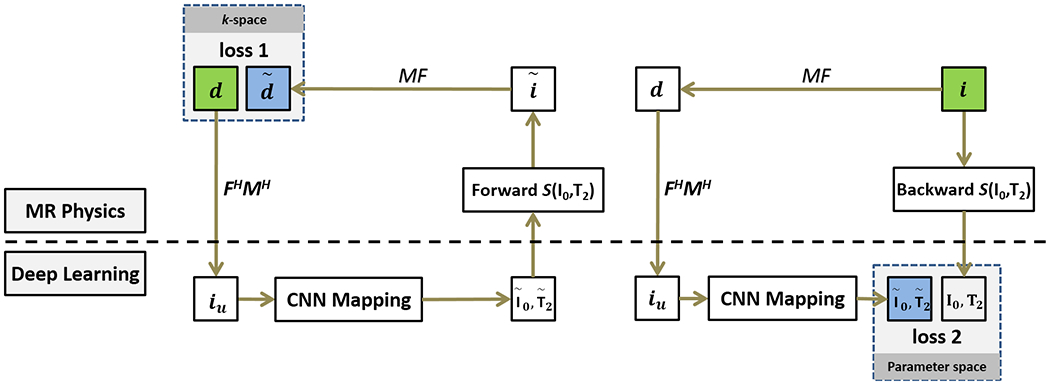Figure 1:

Illustration of the MANTIS framework, which features two loss components. The first loss term (loss 1) ensures that the reconstructed parameter maps from the CNN mapping produce synthetic undersampled k-space data () matching the acquired k-space measurements (d) in the k-space domain. The second loss term (loss 2) ensures that the undersampled multiecho images produce parameter maps that are same as the reference parameter maps (i0, t2) genrated from reference multiecho images. The MANTIS framework considers both the data-driven deep learning component and signal model from the basic MR physics. The notation in this figure follows the main text description.
